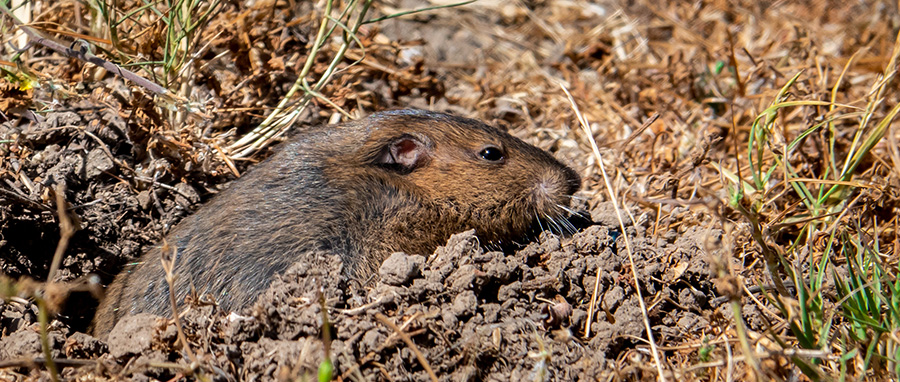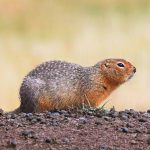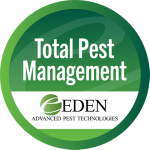Burrowing mammals can be a hassle on your property, but how do you know which you’re dealing with? There are so many possibilities ranging from gophers to marmots, moles to ground squirrels, prairie dogs, and much more. Each species brings its own unique set of challenges, so it’s important to understand the differences between each species.
In this article, we’ll provide some helpful tips on how to tell apart different burrowing animals.
How Do You Know If You Have Gophers on Your Property?
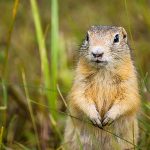 If you know you’re dealing with burrowing animals on your property but aren’t sure which type, there’s a good chance it’s gophers. Gophers are often the primary suspects when it comes to burrowing mammals because they’re extremely common.
If you know you’re dealing with burrowing animals on your property but aren’t sure which type, there’s a good chance it’s gophers. Gophers are often the primary suspects when it comes to burrowing mammals because they’re extremely common.
Here are some key traits to help you identify gophers:
- Small, compact bodies with stout legs
- Fur that ranges in color from brown to gray
- Prominent front teeth for burrowing
- Raised, rounded dirt mounds around burrow entrances
If you need experienced gopher control service, be sure to give us a call and we’ll take care of the problem quickly and efficiently.
How to Tell the Difference Between Gophers and Marmots
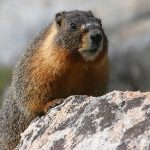 Misidentifying marmots as gophers is a common mistake due to their similar appearance. To someone who is unfamiliar, a marmot may look just like a large gopher. However, there are distinct differences:
Misidentifying marmots as gophers is a common mistake due to their similar appearance. To someone who is unfamiliar, a marmot may look just like a large gopher. However, there are distinct differences:
- Larger and more robust than gophers
- Bushy tails and reddish-brown fur
- Tend to inhabit rocky areas or slopes
- Burrow entrances are larger and less rounded
- Emit loud whistles as an alarm call
If you’re dealing with marmots on your property and want them gone, call us today and schedule your specialized marmot control service.
Ground Squirrels vs Tree Squirrels
We often think of squirrels as living in trees, but they can also live in underground burrows. Ground squirrels look very similar to their arboreal counterparts but with some key differences:
- Ground squirrels have a more robust and compact body; tree squirrels tend to be longer and more slender
- Tree squirrels have longer tails to help them walk along precarious branches
- Ground squirrels are often seen standing upright near burrow entrances; their burrow entrances may appear cluttered and with multiple openings
- Ground squirrels have varied fur colors, including shades of brown and gray
Moles vs Other Burrowing Animals
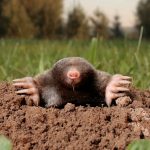 Moles look quite distinctive from other burrowing animals you might come across. If you happen to see a mole, they’re fairly easy to identify. They’re specialized for underground life and can be distinguished from other burrowers by the following traits:
Moles look quite distinctive from other burrowing animals you might come across. If you happen to see a mole, they’re fairly easy to identify. They’re specialized for underground life and can be distinguished from other burrowers by the following traits:
- Small eyes and ears, barely visible beneath fur
- Velvety fur that is dark gray to black
- Strong, shovel-like front paws for digging tunnels
- Cone-shaped dirt mounds with no visible entry holes
If moles start popping up on your property, our mole control experts can help. Schedule your appointment today.
How to Tell Gophers Apart from Prairie Dogs
 Prairie dogs are common in certain parts of the country, most notably “the prairie,” or central plains regions. They look similar to gophers, but prairie dogs are social animals that live in colonies and create extensive burrow systems. You’re unlikely to ever find a solitary prairie dog, so if you see one, and you’re trying to figure out if it’s a prairie dog or gopher, it’s probably a gopher.
Prairie dogs are common in certain parts of the country, most notably “the prairie,” or central plains regions. They look similar to gophers, but prairie dogs are social animals that live in colonies and create extensive burrow systems. You’re unlikely to ever find a solitary prairie dog, so if you see one, and you’re trying to figure out if it’s a prairie dog or gopher, it’s probably a gopher.
Here are some other traits that set prairie dogs apart:
- Distinctive tan or light brown coloration
- Live in open grasslands or prairies
- Bark-like vocalizations used for communication
- Complex burrow networks with multiple entrances and chambers
What are “Pocket Gophers” and “Rock Chucks”?
Different animals are often called different things by different people even though they’re the same. This is likely because of small differences in observed specimens and species distributed in different areas. In the case of “pocket gophers,” there is no difference. “Gopher” and “pocket gopher” can be used interchangeably.
“Rock chucks” are another case of mistaken identification. They are simply marmots, or more specifically, yellow-bellied marmots, which are the most common type of marmot in our region.
Don’t Let Burrowing Mammals Take Over Your Yard
Identifying burrowing mammals can be challenging, but it’s crucial for effective removal and prevention. If you’re struggling with gopher control in Spokane, Eden Advanced Pest Technologies is here to help.
Our expert services can rid your property of these pests and safeguard it for the future. Contact us today to learn more about our comprehensive wildlife solutions.
Back to Gopher Control
